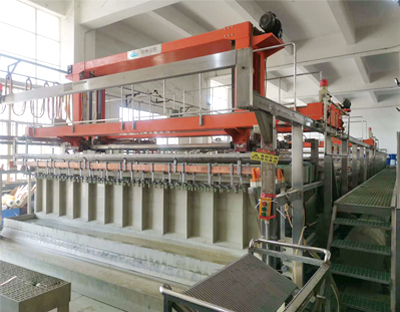Since the country’s drastically launched 5G construction, the heat of the PCB industry has never dissipated. Starting from the second half of 2020, there have been frequent announcements from board manufacturers that demand exceeds supply and orders are scheduled until next year. However, the sudden outbreak and the severe Sino-US trade war have changed this situation.
Since the beginning of this year, with the intensified reversal of the industrial situation, the middle and lower reaches of the industrial chain are generally affected by rounds of out-of-stock price increases and are facing multiple crises, especially in the PCB market. Recently, someone in the industry said: “Compared with last year, we believe that the overall development of the PCB industry this year has tended to be weak; the industry is chaotic, and many PCB manufacturers are afraid to take orders even if they have orders.”
Substrate prices skyrocketed
Since the beginning of this year, the performance of commodities in the capital market has been very eye-catching. The overall increase far exceeded that of many major categories of assets, and there was a surge not long ago.
According to the statistics in the West China Strategy Report, LME copper prices have risen by nearly 36%, ICE oil prices have risen by 32%, and LME aluminum prices have risen by nearly 28%. In addition, LME lead, LME zinc and LME nickel prices have risen close to or More than 10%.
In fact, this wave of price increases does not happen overnight, but has begun to show up as early as 2020. The prices of basic raw materials such as aluminum, copper, and iron have soared, which directly led to the continuous soaring of the prices of upstream deep-processing materials such as copper foil and copper clad laminates that PCB board manufacturers need to purchase.
According to statistics, Kingboard, the leader in the copper clad laminate industry, has carried out five price increases in 2020. In May of this year, a number of copper clad laminate manufacturers issued price increases again.
Among them, Kingboard will increase the price of HB/VO/22F/CEM1 plates by 5 yuan/piece, Laizhou Pengzhou Electronics will increase the price of 22F/CEM-1 plates by 6 yuan/piece, and Weilibang Electronics will increase the price of all copper clad laminates by 6 yuan/piece; Panasonic raised 15%-20% for copper laminate, resin green film and subsequent sheet-like materials products.

The prices of upstream materials continue to hit new highs, making the cost pressure that the board manufacturers have to bear gradually. Even so, the PCB boards cannot rise with the tide. When a manufacturer was asked about the price increase of PCB boards, he reluctantly said: “Do you think the overall price of consumer electronic products has risen this year? The prices of terminal products have not risen, how can we increase it?”
The terminal does not buy it
At present, the main sources of the performance of most PCB manufacturers can be divided into three areas: consumer electronics, 5G base stations, and new energy vehicles. Although the market demand for 5G base stations and new energy vehicles has increased rapidly in the past two years, consumer electronics is still the main contributor to the performance of most board manufacturers.
The above-mentioned manufacturer told Jiwei.com: “Everyone has been emphasizing the need to increase profitability by making some high value-added products in the past few years, but before these emerging industries develop, the entire PCB industry has been oversupply for a long time, so board manufacturers rely on volume to make money. It’s difficult to change the tone of the market in the short term. Even with the blessing of 5G and the automotive market, the real volume is in consumer electronics.”
“The situation in the consumer electronics market this year is not optimistic. Affected by Sino-US trade, the epidemic, and chip shortages, sales in the smartphone-based market have declined significantly, and terminal manufacturers themselves are facing greater pressure on sales and performance. At this point in time, there are very few customers accepting board manufacturers’ price increases.” The above-mentioned manufacturers continued to talk.
According to industry insiders: “A certain line of mobile phone brands in China had previously raised the sales price of its TV products due to increased material costs, resulting in a rapid decline in sales of such products.”
In contrast to the current situation of base station construction, although the main theme of increasing the popularity of 5G is still there, it is undeniable that the speed of China 5G base station construction has slowed down due to the impact of Sino-US trade issues. The Ministry of Industry and Information Technology stated at the beginning of this year that China plans to build 600,000 5G base stations in 2021. Looking back at 2020, China has added about 580,000 5G.
In addition, because the new energy automobile market has poured into a new force for making cars this year, and this camp is dominated by Internet and mobile phone companies, it has completely disrupted the originally stable terminal market for automobile companies.
The industry insider pointed out that the new energy automobile market is a very good development area for the PCB industry, but the concept of new forces to build cars is completely different from that of traditional car companies, and the approach to supply chain management is still the same as that of mobile phones. Now if manufacturers make some traditional car companies, the price of PCB boards is acceptable, but the prices given by mobile phone brands are very low.
“Except for the boards used in tablets and laptops, PCB manufacturers who do other products are not so happy.” The above-mentioned person said.








 Dec. 18, 2019
Dec. 18, 2019 



